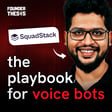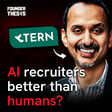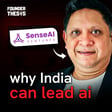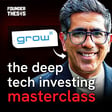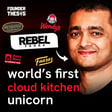
How to Build Real-World AI Products That Scale | Pawan & Paramdeep (Shorthills AI)
"The real power would lie if we crack the technology piece very clearly."
Pawan Prabhat and Paramdeep Singh emphasize the importance of robust technology in their ventures. In this episode, they share their journey of building and scaling tech-driven companies, highlighting the critical role of innovation and adaptability in solving complex business problems.
Pawan Prabhat is the Co-founder & President at Shorthills AI, a company focused on building enterprise applications on LLMs. He is a serial entrepreneur; his previous EdTech venture, EduPristine, grew at 80+% YoY and was acquired by Adtalem (NYSE: ATGE).
Paramdeep Singh is the President & Co-founder at Shorthills AI. He brings extensive experience in technology, operations, and business modeling. Previously, he co-founded EduPristine, which achieved market leadership in the Ed-Tech space.
Key Insights from the Conversation:
- The importance of having a long-term vision.
- How EdTech was not the flavor of the season when they started EduPristine.
- The intricacies of building and scaling AI-driven solutions.
- Why LLMs are not just hype.
- The future of generative AI in solving enterprise problems.
Chapters:
00:00:00 - Introduction to Serial Founders and Their Journey
00:01:12 - From Hardcore Coders to Business Leaders
00:05:36 - Choosing Between Online and Offline Education
00:08:39 - Finding Product-Market Fit
00:13:34 - Building a Profitable Business vs. Burning Cash for Scale
00:18:45 - Cracking the Global Market
00:28:48 - Starting Shorthills AI: Solving Tough Problems with AI
00:39:28 - The Hardest Problems in Building an AI-Powered Review Platform
00:51:57 - Evolution of Large Language Models (LLMs)
01:10:11 - Leveraging Generative AI for Enterprise Solutions
01:13:17 - The Nuances of Prompt Engineering
01:28:50 - The Long-Term Vision for Shorthills AI
Hashtags:
#GenerativeAI #LLMs #ArtificialIntelligence #MachineLearning #StartupIndia #FounderThesis #Entrepreneurship #TechStartups #AIApplications #DeepLearning #Innovation #BusinessStrategy #Podcast #Technology







